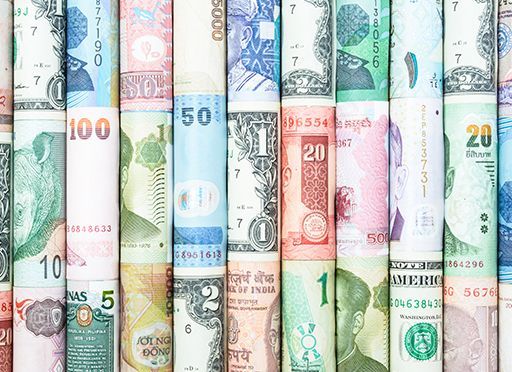Best-selling author Robert T. Kiyosaki offers dueling dads and valuable financial planning advice.

Never Mind the Dads
Bestseller Robert T. Kiyosaki built an empire of Rich Dad, Poor Dad books – a dozen of his 16 titles feature the words “Rich Dad.” Kiyosaki had two dads, one rich and one poor. Both provided life lessons as reflected by his account of each man’s character and experience. One was a fearful loser and died owing money. The other was a bold winner and died leaving money to charities and his family. Their diametrically opposite attitudes – loser/winner; small timer/major leaguer; scaredy-cat/big bad wolf – provides the narrative horse that Kiyosaki rides. And rides. And rides.
Windy
Rich Dad, Poor Dad is a windy fable. Kiyosaki describes himself at different ages and presents what he claims are word-for-word versions of the at-first baffling – then later, profound – teaching moments both fathers provided. The rich dad talked in riddles. The young Kiyosaki found this perplexing until – after he made financial mistakes that led him to his true course in life – a blinding flash of revelation revealed his rich father’s purpose. This narrative method conveys each lesson, but it gets old really fast.
Money often makes obvious our tragic human flaws, putting a spotlight on what we don’t know. Robert Kiyosaki
Kiyosaki, writing here with CPA Sharon L. Lechter, fills pages with perfect fluff. For instance, he recounts the story of his early misunderstanding of the phrase “making money.” The story neither rings true nor justifies the space Kiyosaki spends on it. But that’s the author’s gift: He’s a hokey but likable storyteller, and he pads his advice like a mattress. However, Kiyosaki is not a repeat bestseller for nothing. His prose rips along, all short simple sentences and rhythmic punch lines. He writes page-turners.
Worthwhile Advice
Once he finally sets aside his pervasive, somewhat grating two dads device, Kiyosaki delivers straightforward, worthwhile financial and life advice. He doesn’t write for investment bankers or at-home high-speed traders. He writes for low-income or middle-class workers trying to understand the complexity of their finances and of potential investments.
In these instances, Kiyosaki does not speak in parables. He details what you should do with your money and why. He proselytizes you to embrace a new, empowered mind-set. He wants you to regard your money as a tool, whether you have a lot or a little. Kiyosaki does not despise the $100 investor. His book and his career exist to convince you that no matter how little or how much money you have, you have enough to make it work for you.
Many financial problems are caused by trying to keep up with the Joneses. Occasionally, we all need to look in the mirror and be true to our inner wisdom rather than our fears. Robert Kiyosaki
Kiyosaki maintains that money isn’t magical or disposable or the stuff you use to buy beer. Money is a fulcrum, a device that lets you lever the circumstances of your life into financial security – if you understand and apply a few basic principles. Kiyosaki’s practical advice is so practical – and he states it so clearly – that you will wonder why he bothers lugging around the two-dad stories.
One reason is that two dads is Kiyosaki’s brand, the lure that brings readers to his advice. Another is that the two dads render Kiyosaki’s abundant common sense accessible and easy to accept. Perhaps the most important reason is that without the dad stories, Kiyosaki’s book would be about 50 pages long. Even as it is, those 50 are more than worth the price of the other 200.
Necessary Principles
In those 50 pages, Kiyosaki capably teaches basic, necessary principles. For example, he urges you to buy assets, whatever they are, however small. If can purchase an asset that might grow in value, get it. Don’t buy a new TV or a car, and don’t buy a new suit or expensive dinner, he insists. Take that money, find something that you know will gain in value and acquire it before you spend your hard-earned coin on something that will not appreciate.
With each dollar that enters your hand, you and only you, have the power to determine your destiny.Robert Kiyosaki
Kiyosaki maintains that nothing else matters: Buy assets and hold them until it’s clearly time to sell. Or, hold them until you find an even more valuable asset in which to invest.
Payoff
Few authors, bestsellers or otherwise, tell you that they’re going to clarify complex ideas and then actually do it. Kiyosaki is one of them. He offers admirably simple, revealing, easy-to-understand diagrams of your likely cash flow. These useful illustrations demonstrate the author’s genius for simplifying complex economic questions. It also demonstrates why you might refer to his book often.
He outlines the relationship between income and expenses, and between rising income and rising taxes. Every apparent discursion proves to be another riddle – another story you must read to its end to understand how to apply its lessons to your finances. The difference between his two dad riddles/fables and his real-world riddles/fables is that the latter prove consistently compelling. And Kiyosaki’s payoffs reveal worthwhile conclusions you might not have reached on your own.
Aside from the infinite number of Kiyosaki’s other Rich Dad books, you can find sound, basic financial advice – often with fewer parables – in a bookshelf full of competing manuals, including Complete Guide to Money by Dave Ramsey; How to Make Your Money Last by Jane Bryant Quinn; Suze Orman’s Financial Guidebook (and her other titles); and two evergreen classics, Think and Grow Rich by Napoleon Hill and The Intelligent Investor by Benjamin Graham.





